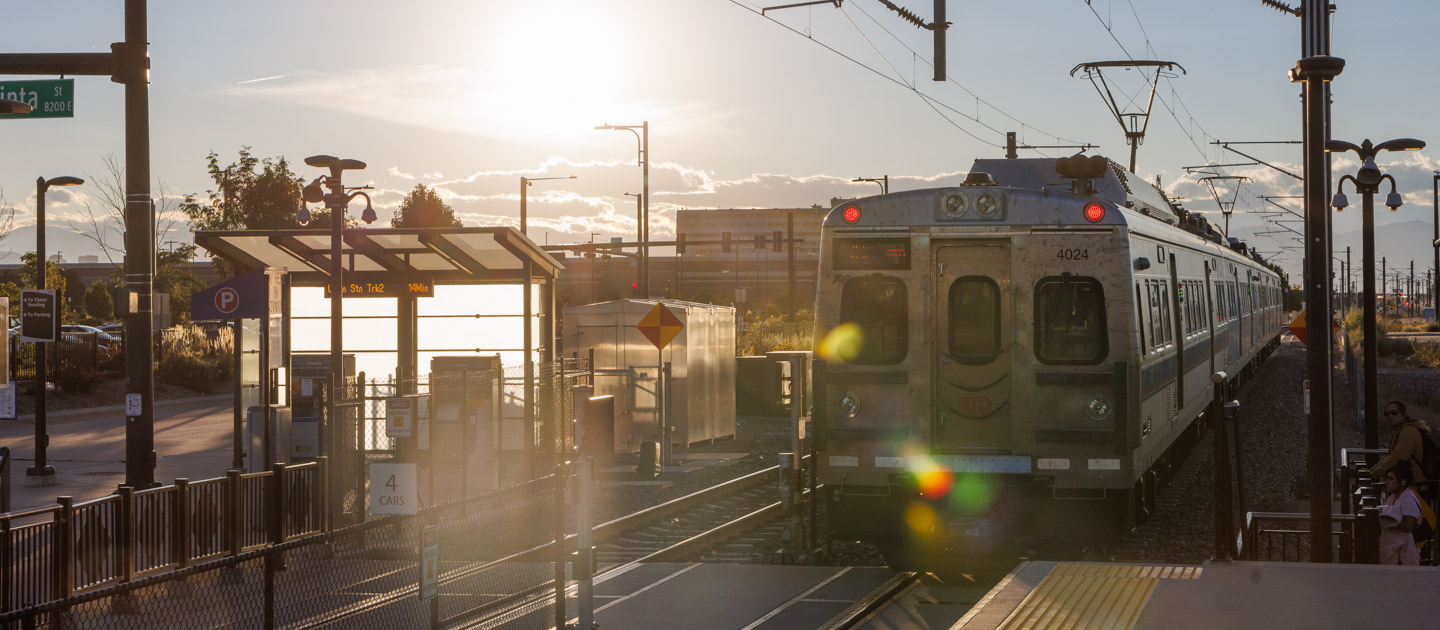
A Line
Facts
- Length (miles): 23
- Vehicle Type: Electric commuter rail
- Stations: 8
- Parking: 4,329 (opening day); 8,700 (2030 projection)
- Frequency of Service: 15 min (6 a.m. - 8 p.m.) / 30 min (early a.m., late p.m.)
At a Glance
- The East Rail Line, also known as the A Line, is part of RTD’s 2004 voter-approved FasTracks plan to expand transit across the Denver metro region.
- The 23-mile electric commuter rail line between Denver’s Union Station and Denver International Airport (DIA).
- Seven rail stations are along the line: 38th & Blake, 40th & Colorado, Central Park, Peoria, 40th Avenue & Airport Boulevard-Gateway Park, 61st & Pena, and Denver Airport (Union Station not included).
- The line is part of the larger Eagle P3 project that also includes the G Line and the first segment of the B Line.
Project Overview
- 1997: Plans for rapid transit between downtown and DIA began when RTD conducted an investment study to determine recommendations for commuter rail, light rail, highway widening and transportation management.
- 2003: RTD FasTracks and the Colorado Department of Transportation initiated an Environmental Impact Statement (EIS) process to study improvements to the I-70 East Corridor.
- 2007: Federal Transit Administration (FTA) officials selected the East Rail and Gold lines for a public-private partnership pilot program, which gave birth to the Eagle P3 project.
- 2009: RTD FasTracks released a final EIS; received an FTA Record of Decision, completing the environmental process; and released a Request for Proposals seeking private partners to design, build, finance, operate, and maintain the East and Gold rail lines.
- 2010: RTD FasTracks selected Denver Transit Partners as Eagle P3’s contractor for a 34-year concession.
- 2011: Eagle P3 received a $1.03 billion Full Funding Grant Agreement from the FTA, the largest awarded to date at that time by the Obama administration.
- 2014: The last rail was laid and the first commuter rail vehicles arrived in Denver.
- 2015: Testing, commissioning, and safety compliance began.
- 2016: The A Line opened on April 22, 2016.
- 2019: Established quiet zones along the corridor.